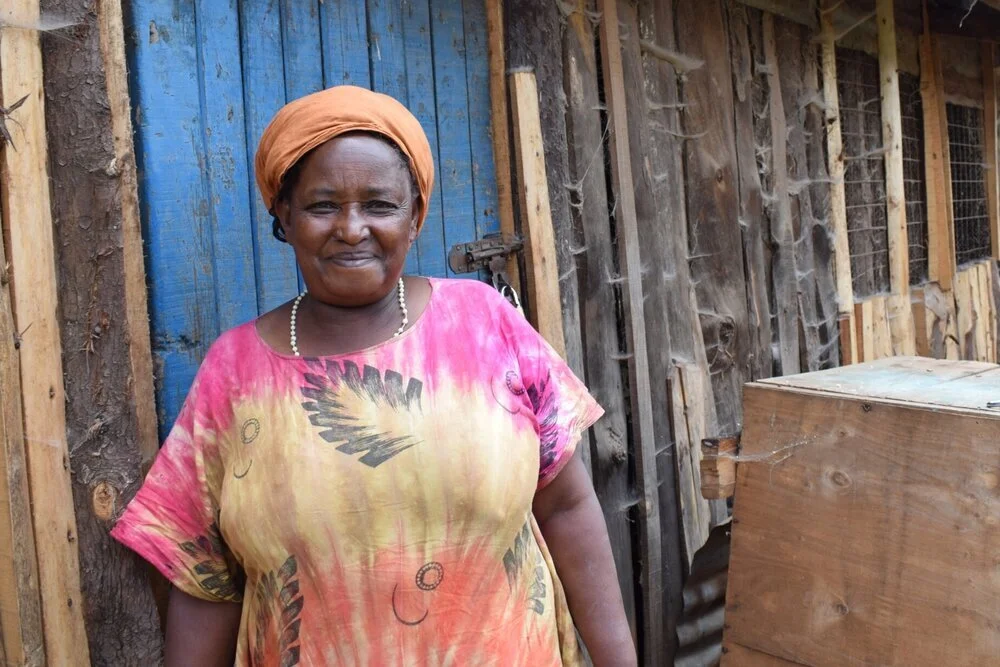Kenya
Rural regions of Kenya suffer from especially high levels of poverty and low levels of educational achievement. Isolated from mainstream services because of their remoteness, they can often be overlooked.
A rise in student numbers has not been matched with investment in facilities, staff or teaching methods. This means the quality of education suffers and the cycle of poverty continues.
Girls are particularly disadvantaged as cultural attitudes in many communities prevent parents from supporting their daughters' education. Discrimination, abuse and child marriage can also become obstacles to them reaching their potential.
Agriculture is the main source of income. However without the right seeds, equipment and training many farmers struggle with poor crop yields. They become unable to provide for their families, pay healthcare bills or afford their children’s education.
A lack of basic financial services prevents families from investing in their livelihoods, or accessing support in times of need. This makes entire communities vulnerable to environmental and economic stresses.
What we do
We have an integrated approach, working with eight school communities at a time, which addresses the needs of children at home, at school and in the community, to give them the right infrastructure, resources, quality teaching and parental support to help them get the most from their time at school.
Improving Education
We make sure schools are safe and accessible by working to renovate and construct classrooms, libraries, staff-rooms and kitchens, as well as improve access to clean drinking water, hygienic toilets and sanitation.
We help schools to access engaging learning resources, inspiring text books and educational games to help children get the most out of their time at school.
We support every school to meet the needs of every child, making sure that materials and teaching methods are accessible to children with disabilities, and that girls aren’t held back by anything from cultural attitudes to poor toilets during their period.
We train teachers in child-focused teaching methods appropriate for each age group and connect them through collaborative networks to solve problems, making sure staff are motivated and well supported.
We help establish and monitor school policies and practices that promote and protect the welfare of children and teachers.
Economic Empowerment
We have been working with 3,400 farmers in Gilgil and Elburgon, creating networks among village savings and loans groups to promote better farming techniques and methods, and to improve knowledge sharing between farmers.
As a result of the networks farmers can manage fluctuating, seasonal income and better manage their household expenses and labor needs. Farmers have increased produce quality and quantity and are storing goods for better economic and food security for themselves and their children. The new resources allow farmers to support their children's education in the home.
Village Savings and Loans Associations (VSLAs) gave 4,000 parents across 60 villages access to vital community-based financial services, helping them save for and invest in their livelihoods or children's learning.
Stories From Our Work
Esther - the student determined to become a lawyer
‘When I was in class one, there was a lot of dust in the classrooms. To get rid of the dust we had to carry water from very far away to pour on the floor. Carrying water, food and books was very heavy and there were a lot of diseases caused by the dust.’
Esther’s school has benefited from the addition of eight new classroom blocks and a seven stance pit latrine.
‘The new classrooms are much less cold as they are made from timber and mud. Now I will be able to perform better at school, helping me reach my dream of becoming a lawyer.
Susan - the farmer growing her own business
Susan has been a poultry farmer since 2010, but struggled to earn enough money to care for her five children. When her sister passed away, and she became responsible for looking after her two children as well, Susan found herself struggling even more. Susan has since benefited from training and support:
‘I really appreciate the training that I have been getting. I have been implementing what I have learnt to improve my farming and reduce costs and that’s how my business is now growing.’
Recently Susan has been learning how to produce chicken feed at a low cost, which will help to make her farm more profitable. She has recently bought another plot of land where she wishes to expand her chicken business; her goal is to one day begin farming commercially, and teach other local farmers what she has been taught.
‘This chicken business benefits me in a number of ways. I have some basic food security at home so we don’t go hungry. If my children need money for school, I take ten chickens to the market to sell and I have some money so they’re not denied to continue their education.’




